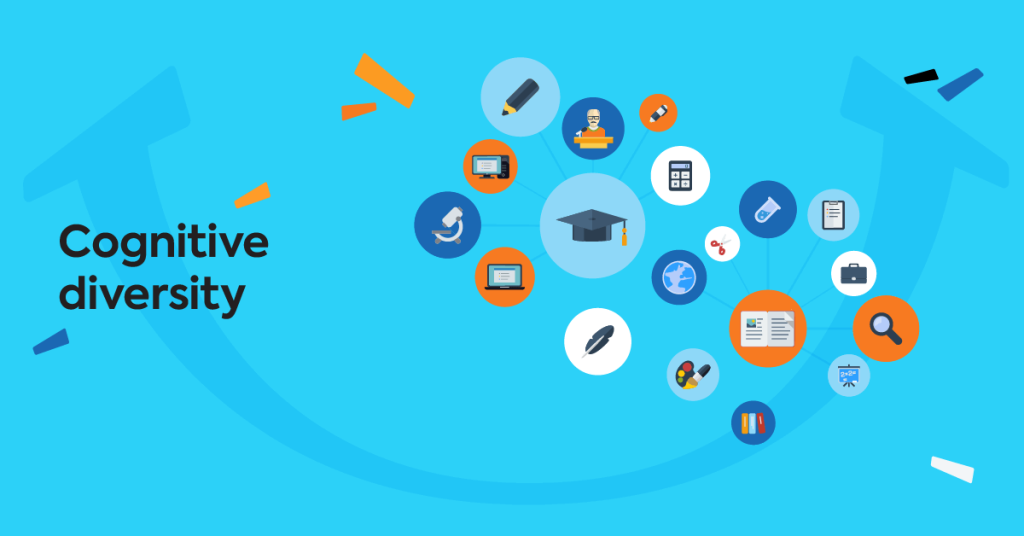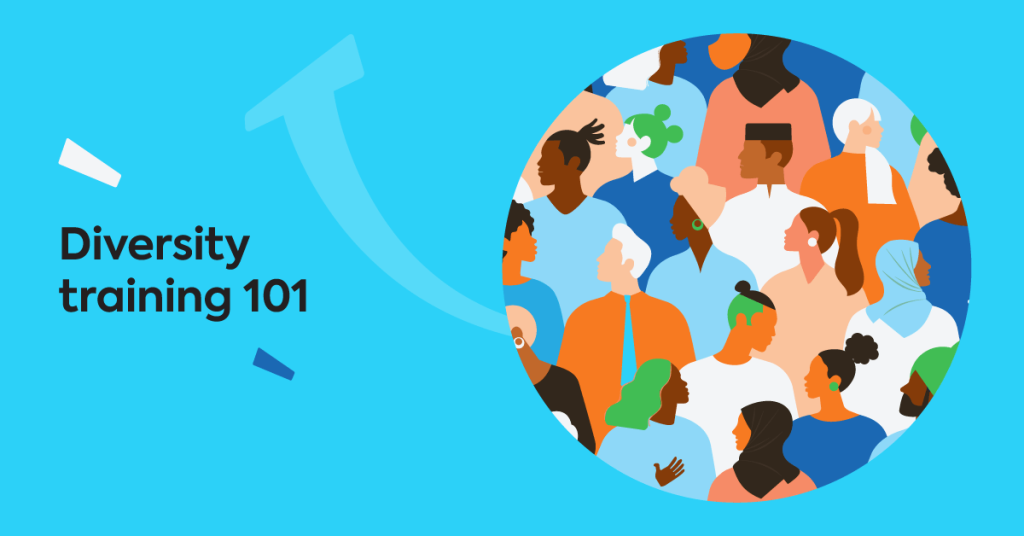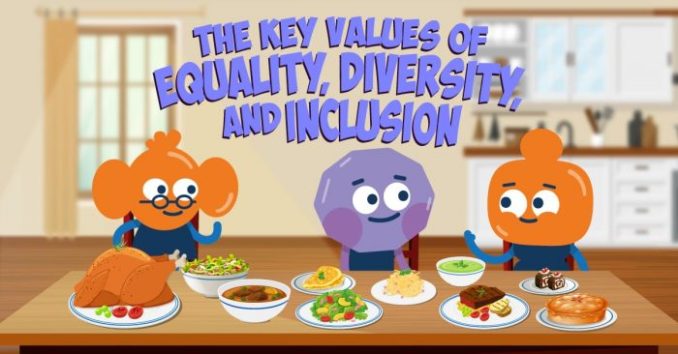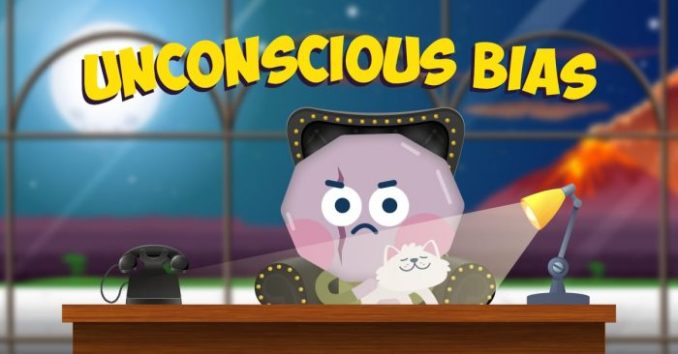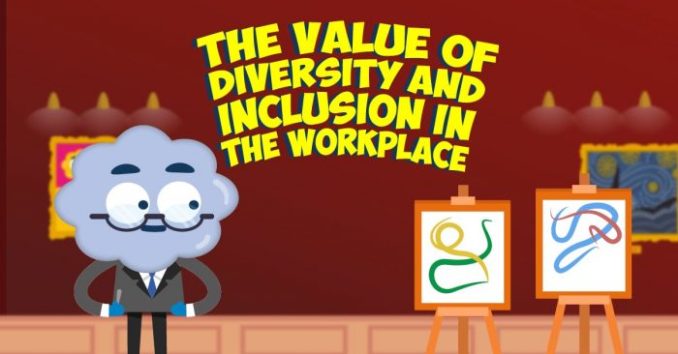Episode 7: Empathy and Inclusivity in the Workplace
Duration: 37min
About our guest:

Dr Poornima Luthra
Associate Professor at CBS and a renowned author and expert in the field of DE&I, Dr. Poornima Luthra has authored two influential books, ‘Diversifying Diversity: Your guide to Being an Active Ally of Inclusion in the Workplace’ and ‘The Art of Active Allyship’.
Additionally, Poornima’s thought-provoking insights have been featured in Harvard Business Review articles. Her expertise has also earned her recognition as one of the world’s 30 most up-and-coming management thinkers by Thinkers50 in 2023.
Share episode
What does it mean for an organization to be truly inclusive? How can you confront biases and become an active ally without causing conflict? We sit down with Dr. Poornima Luthra, an author, academic, educator, and consultant.
Her latest book “Leading Through Bias” challenges businesses to shift their mindsets toward inclusion. From the hiring process to the c-suite to the lunch room, we look at ways we can challenge day-to-day biases we might not even be aware of to create an environment that works for everyone.
Key takeaways:
Simply making people aware of bias without providing practical tools to address it is insufficient. Taking people to the edge of a cliff without giving them a parachute is the biggest pitfall in unconscious bias training—it builds awareness but lacks actionable solutions for dealing with bias when it arises. What needs to be done is to equip people with effective strategies to block and address bias in real-world situations.
In hiring, specifically while under pressure, quick decisions lead to choosing people who can easily fit into the team—often resembling existing team members. This is the “cookie cutter syndrome.” There’s a need for a shift in mindset, where employers should prioritize “culture add” instead of “culture fit” and consider the skills and perspectives missing within their team, rather than opt for familiarity and comfort. The focus should be on diverse perspectives, experiences, and skills that complement and fill gaps in the team.
Everyone plays a role in taking responsibility and showing leadership, regardless of formal titles. Leadership might be confined to those with official positions, but is this right? Anyone with a sphere of influence can positively impact others. And communication is a simple, yet powerful way for everyone to contribute. People should recognize their ability to influence and proactively engage in inclusive communication to foster positive change around them.
More episodes we think you’ll love
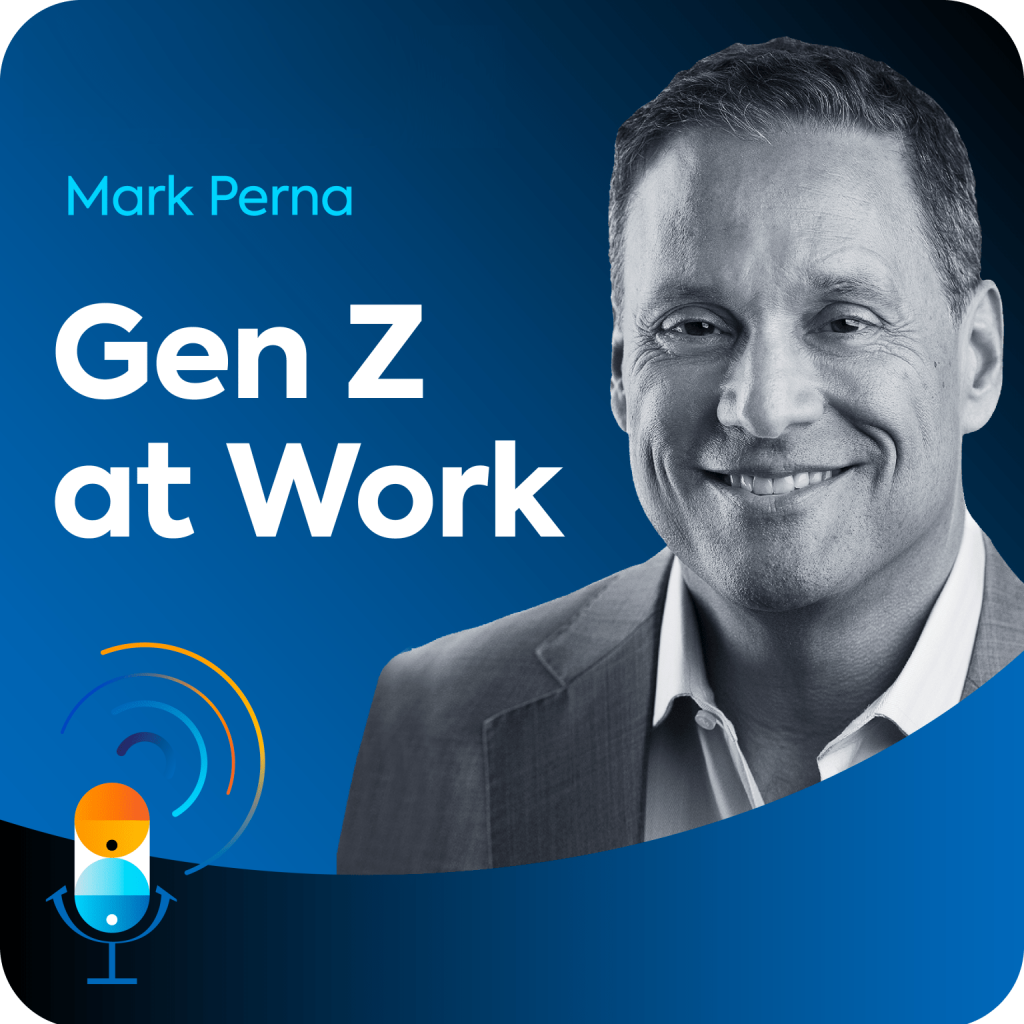
February 28, 2024 • 25 min.
•
People Management | Learning & Development
Unlocking Gen Z’s full potential in the workplace
What are the biggest truths and misconceptions about Gen Z in the workforce? How can managers adapt their leadership style to play to the strengths and weaknesses of the next generation? We talk to Forbes contributor and generational expert, Mark Perna, to examine how businesses can make the most out of a multi-generational workforce, why Gen Z is the ‘benchmark’ generation, and how to attract and retain the talent of tomorrow.
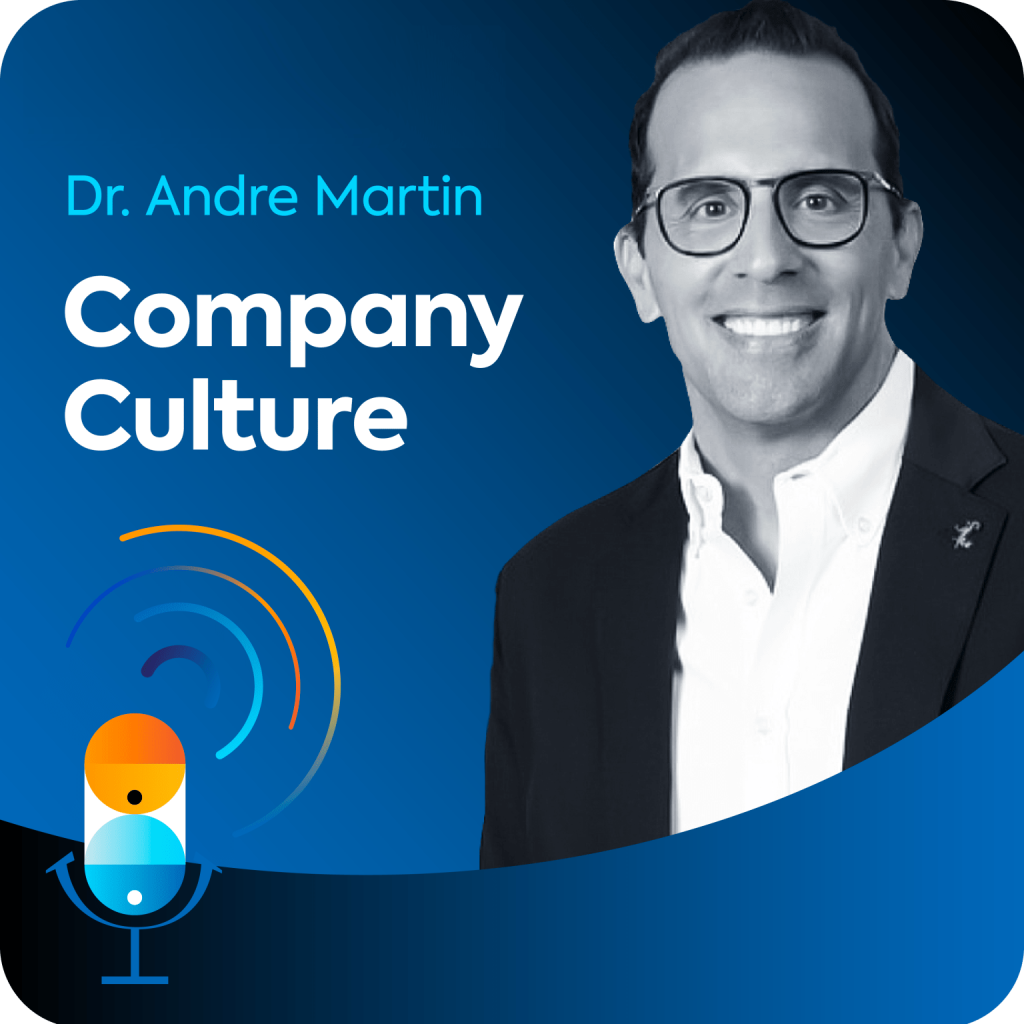
January 31, 2024 • 38 min.
•
People Management | Learning & Development
Defining & Decoding Company Culture
What is company culture? Is it ping-pong tables and perks? Is it the values we talk about internally? Or is it the way the company works “on a random Tuesday in October”? With experience at Disney, Nike, and Google, Talent Exec, Andre Martin joins the discussion. Join us and find out why authenticity and intention lie at the heart of a consistent culture.

December 6, 2023 • 40 min.
•
Organizational Design | People Management | Learning & Development
Preparing for the AI-powered workplace
What’s on the horizon beyond ChatGPT? How can you prepare for AI-led digital transformation? We sit down with Ronald Ashri to discuss everything from employee privacy to rethinking how teams are trained and emerging new AI-related roles (prompt engineers?!). Join us as we skip the speculation and get stuck into the concrete considerations organizations should take into account when adopting new AI tools.
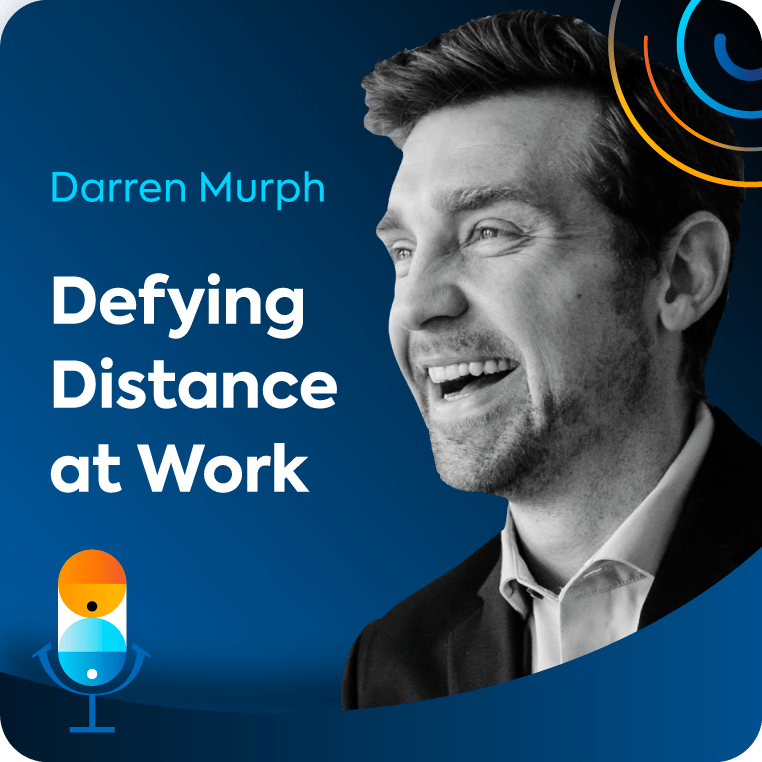
September 27, 2023 • 30 min.
•
Organizational Design | People Management
Defying Distance with Distributed Teams
We sit down with Darren Murph who’s been preaching the benefits of borderless offices for almost two decades, earning him the moniker ‘Oracle of Remote Work’. Together, we cover everything from the tools that improve async work to how workplace culture is teetering on the verge of a seismic shift. Plus: Darren’s top tips on the traits leaders need to succeed in transitioning to a remote-working future.
No DE&I training content? No problem. This is TalentLibrary™
Want to train your people, but creating courses from scratch just isn’t your thing? Save time and access content prepared by the experts at TalentLibrary, the growing collection of ready-made courses available on TalentLMS.
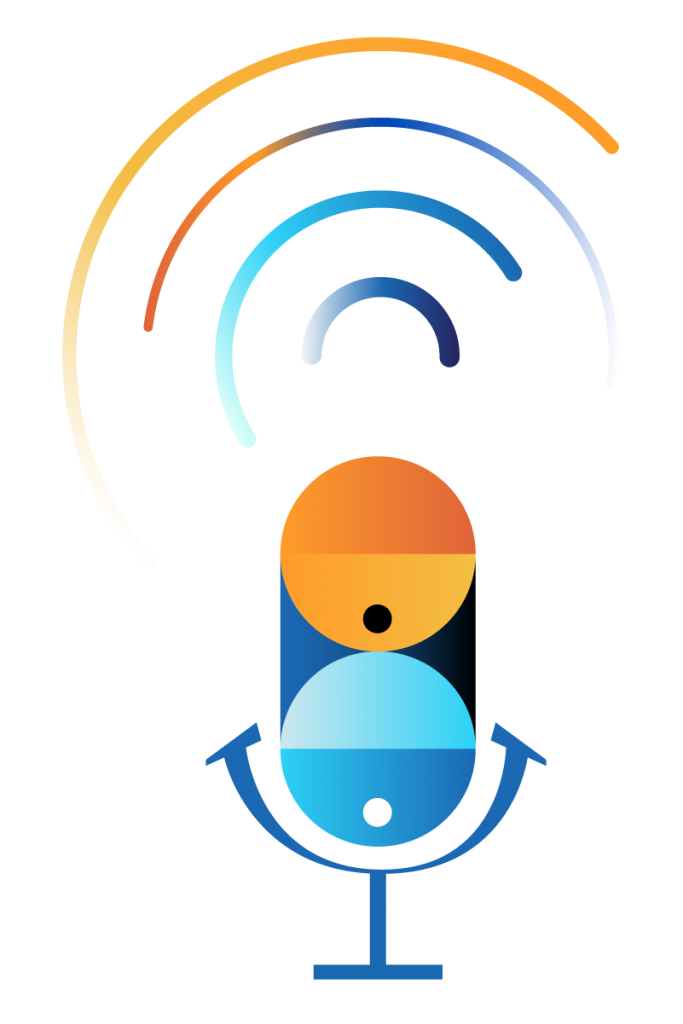
Never miss an episode! Get every new drop right in your inbox
Full Episode Transcript
Host: We’re talking about diversity and inclusion. How can leaders tackle the visible and invisible biases in their workplace? Not only through strategy and rhetoric but by making small changes to their own day-to-day behaviors. Joining us is academic author and CEO of TalentEd consultancy firm, Poornima Luthra. Her latest book Leading Through Bias outlines some clear pathways to creating a more inclusive workforce. From dealing with the discomfort of authentic conversations, to creating an environment where employees can be vulnerable. To something as simple as slowing down and being curious. Stay with us. [00:01:32]
Hey Poornima, thank you so much for taking the time to be with us today. It’s so great to have you with us. [00:01:57]
Poornima: Of course. I’m always happy to have a good conversation. [00:02:02]
Host: So, you are an expert in diversity and inclusion. Could you tell us what does diversity in the workplace mean to you and how you would define it? How has it evolved over the past decade or so? [00:02:08]
Poornima: Yep. That’s a great question. A very big question. So diversity, equity, and inclusion, they go together. And in some companies, it’s DEI, in other companies, it’s IED and various permutations and combinations of those three letters. At the core, diversity, equity, inclusion is really about nurturing spaces, whether it’s in companies, in societies, and institutions in which everyone is able to bring their whole self, is valued and respected, where they’re seen as their unique selves, where they feel that sense of belonging, where there are structures, systems, policies, and practices that are equitable for everyone. [00:02:22]
And it is really about ensuring that takes place. So that’s the vision. That’s the dream. And then, of course, in our organizations, we’re all working in different ways to try to make that happen. And the reality is that for most organizations, institutions, and societies, the reality is that there are systems that have been set up, sometimes decades ago, sometimes even a hundred years ago, that have been set up at a time when there was greater patriarchy, when there was systems of oppression, and we’re still living with the consequences of that. So in many ways, we’re trying to redesign, build up, dismantle many of these systems of oppression that lead to inequitable and unequal societies and workplaces. [00:03:01]
Host: And can you also tell us a little bit about needing to move away from the business case of diversity and have diversity for diversity’s sake, let’s say. You’ve talked about this a little bit in your books. So just your point of view would be amazing. [00:03:47]
Poornima: I think organizations go down the pathway of DEI for three reasons, right? And there’s plenty of data evidence that shows us that these are the three main reasons. One is for compliance, depending on where they are in the world. There are reasons. Legislative reasons, companies have to engage in DEI. For some others, and these are fewer, unfortunately, it’s the right thing to do. There’s a moral, ethical stance for this. Leaders, founders of organizations want to do the right thing. But actually for most organizations, it’s actually a business need that really drives them to go down the pathway of DEI. [00:04:05]
And there’s plenty of research actually that shows us that there is a strong business case for DEI. And so it’s easy for companies to jump on and say that, yes, you know, if we do this, this, this, this is what the outcomes are likely to be because that’s what the evidence shows us. But unfortunately, the business case, of course, has its dark side, right? Because ultimately no one from an underrepresented group wants to be hired into a role, into a position, because they are going to then be part of that business case, result in that financial benefit to the organization. And so it’s a tough one because underrepresented groups really feel that, gosh, is this the only reason you’re hiring me? Because I am someone who contributes towards your financial metrics, right? But we also live in a world where what gets measured is what gets done. And we desperately need to move beyond that because diversity, equity, inclusion, yes, we need to have data and metrics to track progress. But at the same time, we need to understand that it is a complex issue. [00:04:43]
That needs to be addressed at many different levels. There are emotions attached to this. There are people’s feelings that are attached to this. There are people’s life experiences attached to this. And how we approach it, the narrative that we use, is crucial to getting people on board with this and also to treat them with respect. So, while I dislike the business case as the key driver, it should be the right thing to do that drives organizations and leaders. It is about ensuring our organizations represent customers, the diversity of customers, they represent the diversity of talent out there. But I don’t think we’re there. I’m a realistic optimist. So while I’d like to think of companies moving in that direction, I don’t think we’re ready yet. I think sometimes it is the business case that drives companies to want to take it on. [00:05:50]
Host: Can you briefly outline what the business case is? [00:06:38]
Poornima: So the business case really stems from a few areas and financial metrics and financial returns at the key driver, actually off the business case. So there’s plenty of research from BCG Boston Consulting Group and McKinsey, which shows us actually that organizations that have diverse boards or ethnic diversity, gender diversity on their boards, as well as the executive leadership teams have anywhere between 19% to about 36% improvement in various financial metrics, right? Profits being one of them, but other financial metrics, including return on investment and many others. So there’s a clear correlation between organizations that have diversity in their leadership teams and the outcomes from it, but there’s also other aspects as well that constitute the business case. So organizations that have diverse teams with an inclusive culture, they are actually shown to have about a 58%t increase in innovation and creative idea generation. And diversity also results in about 67% better decision making as well. So there’s a few areas. So one is of course the hardcore financial metrics, but there’s also the other things around innovation, creativity, as well as decision-making. [00:06:41]
Host: That’s really helpful, thank you. And I definitely want us to talk a little later about how just hiring for diversity does not necessarily create an inclusive environment at work. But for the moment, I really wanted to ask you if you could define the term allyship and do you have any advice on how to be more mindful and active in our efforts to be a good ally? [00:08:02]
Poornima: Yeah, the term allyship is such an interesting term because it actually doesn’t translate very well into other languages. And it’s also became word of the year in 2021. So it’s still relatively new for most of us, so I really appreciate that you give me an opportunity to actually define it because I think it is something that needs to be defined. We need to understand what it is, and we can’t assume that when we look at a global audience who might be listening in that everyone gets what the term allyship is. It’s still new. And the term ally itself comes from a military connotation. So people do wonder what its role is within diversity, equity, and inclusion. [00:08:30]
So the term ally actually comes from within the DEI space from the Stonewall and uprising in the US in the late 1960s. And when these riots took place, the cisgendered heterosexual individuals who supported the LGBTQ+ community, they became known as allies. And that’s where the concept of allyship actually comes from within the space of DEI. [00:09:06]
But it’s only really in the last three, four years that it’s really gained popularity as a concept and a tool for us to be able to lean on to actually show up and nurture inclusion in our workplaces. So in my book, The Art of Active Allyship, I define allyship itself as a lifelong process of building, supporting relationships with people who are from underrepresented, marginalized, discriminated groups, all with the intention of nurturing inclusion. And allyship is a verb, which means that there’s a range of behaviors. The vast majority of us are what I call passive allies. We might believe in DEI, we might show up in an International Women’s Day event or perhaps a Pride parade. But beyond that, we don’t really know what to say or do. So in being passive and being the bystander, we continue to allow biases and discrimination to continue to exist. And so we have to move ourselves from being passive allies to being active allies. And that’s what I write about in the book. And I paint a picture of seven different behaviors that I believe will enable us to move from being passive to active. And so it begins actually with us, and it starts with deep curiosity, having a deep curiosity to actually understand how someone different from ourself actually experiences the world around us. [00:09:31]
And the good thing is today, compared to when I started my research over a decade ago, is that there’s so much material out there for us, right? There’s podcasts like this to listen to, there are audiobooks, there are books that we can read, there are articles that don’t take more than five minutes. So there’s honestly no excuse for any of us not to want to see and understand how someone who’s different from us might experience society, might experience the workplace as well. So it starts off with that deep curiosity. The second is around honest introspection. And that really has to do with unpacking our biases, really understanding where our biases lie, and you know, many of us like to think that we’re not biased, except that we are. If you have a brain, you are biased. It’s simply how our brain functions. [00:10:53]
We can’t run away from that. So the key here is to become aware of where our biases are so that then we can move to the next stage of actually blocking those biases from impacting the decisions that we’re making and how we interact with other people. So that’s honest introspection. Now, the third is humble acknowledgement and humble acknowledgement has to do with really acknowledging the very fact that I don’t know. I don’t know how somebody different from me experiences the workplace around me. And that really comes at the heart of it to understanding privilege, that the things that I don’t experience, the things that I don’t see, the things that I don’t need to consider in my journey through the workplace are things that others need to. And that having the humility to say, I don’t know, it’s not my experience, but it doesn’t mean that it doesn’t exist. It does exist for somebody else. Somebody else experiences that same meeting. The same interaction at lunch. In a different way because of their life experiences, because of their identity. And the fourth one moves on to our interactions with other people and that begins with empathetic engagement. [00:11:39]
So I often get asked this question that whenever we address bias we’re often met with a wall of defense. Oh, come on, I was just joking. Can’t you take a joke? Or you’re overthinking this. And it’s really frustrating, right? It’s all the gaslighting that comes with it. And it’s so important for us to engage empathetically. Now, I also have a caveat here that in extreme cases of sexual harassment, sexism, racism, homophobia, employees of organizations should always lean on their organization’s anti-discrimination practices, policies, which hopefully they have in 2023. Work with your HR partners to be able to really address the issues at hand. And hopefully, HR, employees and leaders in organization actually trained in this area to be able to know what to do without gaslighting people, without dismissing their experiences. [00:12:53]
But then there’s so many other biases that take place in our day-to-day interactions, a casual comment at lunch, something hidden and embedded within humor, a joke that was said at a meeting. A compliment even, right? It’s important for us to know how to address these biases. Or the biases that are embedded in decisions that we make. And so engaging empathetically for me is a huge part of creating psychologically safe environments where we can learn from each other, make better decisions in that process because we’re able to then address the biases that are at play. Too often, the word bias is associated with only negative things. And so we have an “I am not biased bias,” and that’s unfortunate because the reality is we all are, but that prevents us because we have in our minds, this equal signs between if you’re biased, you’re a bad person. And we need to break down that equal sign because all of us are biased. The fifth one is vulnerable interactions, right? Actually, hang on. The fifth one is actually authentic conversations. And then the sixth one is vulnerable interactions. And they both feed into each other. So authentic interactions are all about psychological safety. [00:13:42]
How do we nurture an environment where people don’t mind their biases being pointed out? And people have phrases in their mind. My favorite one is “good catch.” Thanks for pointing it out, right? Having that at the tip of your tongue. So the next time your bias is pointed out, have your own catchphrase, right? Your own phrase that you can use that diffuses the tension in the room. Because sometimes when someone points out our bias, it’s also a real trigger for our ego. And our ego steps in and starts getting defensive, right? And we see it as an attack on who we are and what we stand for. But having that phrase readily available, for me, “it’s good catch,” I’d encourage you to think about what your phrase is, that in your own language, in your own style, what is your phrase that will help you to then respond in a way that diffuses that tension and allows you to then have those authentic interactions and say, yeah, hey, thanks for pointing it out. I’m going to do better. Let’s discuss how this bias is actually impacting the decision that I’m making. And in the process of role modeling that we create an environment of psychological safety where we can continuously point out each other’s biases. And the result is better decision making, better interactions between colleagues. Within teams as well. And so there’s a win-win across the organization of this. And then this leads into vulnerable interactions, which is really around, since I’m not aware of all my biases, because so many of them are unconscious in nature, I just don’t know that I’m holding them. How do I become aware of something I’m unaware of? [00:14:54]
Right? And that’s a question on our minds because otherwise we like, we’re wondering, okay, I know what I know. I know the biases I have, but what are the ones that I don’t know about? And the reality is we can’t know all our biases. There’s so many out there. There are over 50 cognitive biases, situation-related biases. There’s so many identity-related biases. So we have to have what I call a bias compass circle. People that we can go to to check our biases with. So if you think of it like a bias sounding board where you’re making a decision, you’re speaking at an event, you’re writing something to a large part of the organization. Have that and run that by this bias compass circle. And so they then become your sounding board for saying, hey, you know, I think you could switch that word around, it’d be more inclusive. Or walk me through the decisions that you made to get to this final decision. Let’s unpack some of where bias could have played a part. And having a set of people who are part of that bias compass circle is hugely important. I have my own and I have people from different identities, different backgrounds who I constantly check myself around whether it’s my interactions with people I might have had an interaction and I’m not sure of what I said triggered them in some way I run it by my bias compass circle so I’m able to learn and grow as well. [00:16:26]
And the last behavior is courageous responsibilities and that’s a big one there’s quite a lot here for us to step up and do, and I often get asked when the word responsibility comes up that isn’t this only for leaders in our organization? But the way I see it is we’re all leaders in some ways, because we all have a sphere of influence, and very often when we think of leadership, we think of it as being someone with a formal title. But the reality is, as long as you’ve got a sphere of influence, regardless of what your formal title is, you have the capacity to be able to influence others positively. And I think the easiest one we can all do is actually inclusive communication. There are words and phrases we all use. The most common one that I think I come across the most is, “hey guys.” [00:17:44]
Almost every platform that I engage in, you will have someone who says, guys, right? And I’m guilty of it as well. At least I used to be now I’ve gotten much better at it, and I’ve switched “hey guys” to “hey everyone.” So it’s important for us to think about inclusive language, and it’s a small switch, but it makes a huge difference to people sitting in the room. It may not make a difference to you. You might even be a woman who’s using, “hey guys,” but then it’s about just thinking about now, what if I may not get affected by it, but what if someone else does, right? It’s similar with pronouns, right? I go by the pronouns, she/her, and just by sharing my pronouns, it simply makes it a safer space for someone else to also share their pronouns. And that just means that we have an environment that is safe for others to do that. So it may not affect me. I come across as being a she/her, even if I don’t put that pronouns. But for somebody else, it then opens up an opportunity to get their pronouns across and for us to be able to respectfully use it. So sometimes these things are not so much about us. In fact, allyship really isn’t about us. It is about others. [00:18:30]
Host: I really appreciate the breakdown because, if nothing else, you’ve found a way to give actionable advice and in a very simple form, which is very much aligned with the podcast, Keep It Simple. And I really appreciate the fact that you made a point of allyship rarely actually has anything to do with us, the ones trying to be allies. It usually has to do with everyone else. Previously, you touched on hiring and. I’m very curious as to what are some of the most common pitfalls in companies when they’re trying to ensure that they hire a diverse workforce. Is there a right and wrong way to go about it? [00:19:43]
Poornima: So there’s some things that companies can do, of course, to be able to block the biases that are at play. I think one of the main pitfalls it’s that companies are always under pressure. Teams are always under pressure. Leaders are always under pressure to fill roles to get people in who will be up and running in no time. And that’s what we’re looking for. And if we go on that, then it’s easier to fill roles with people that we know “will work.” And I put will work in quotations. And so then we rely on our, what I call cookie cutters, right? So I’m sure you’ve all cooked or baked cookies before or gone to the supermarket and bought cookies. And one of the hallmarks of a good batch of cookies is that they all look the same. Some of you may say, no, they need to have chocolate in it. Sure. Some of you might say it’s really good quality butter. Okay. But regardless of what the ingredients are, they have to look the same, right? You don’t buy a packet of cookie with cookies from a bakery and have them all in different shapes and odd. It just looks strange. We want to buy a pack of cookies that look the same. And that’s what we have in our organizations. We have cookie cutters. Of who is considered to be a successful employee in this role, who is considered to be a successful leader at that level. So one of the biggest pitfalls is the cookie cutter syndrome that we, especially when we’re under pressure, when we need to make quick decisions, we hire someone. Who we think will be able to be up and running the fastest rather than thinking about what is the gap that I have within my team right now? What are the skills and competencies within my team that I’m missing at the moment and whose perspective? What perspectives do we not have. And actually intentionally looking for people who bring diverse perspectives, experiences, skills that complement and address the gap within the team, rather than the easiest person to fit into the team. [00:20:29]
And very often that’s someone who looks like us, who’s been to the same educational institution, who speaks the same language as us, who enjoys the same food as us. It’s pretty easy, it’s comfortable, it’s cozy, right? But you’re not hiring your lifetime partner. You’re not hiring your best friend. You’re hiring someone who adds value to the team. And we often talk about culture fit in our organizations when we should be thinking about culture add. [00:22:33]
Host: That is great advice. Can you also give us some advice on how employers can change their interview and hiring processes to ensure that candidates whose values align with the company’s own DEI are considered for the role? Because that’s also another aspect, right? It’s not just hiring for diversity, making sure that everyone who’s being hired has that same set of values. [00:22:59]
Poornima: So I think for most organizations, what I would recommend is that when you are writing the job description, ensure that being an inclusive leader, inclusive employee with who brings in different perspectives, experiences, skills is something that you are looking for. So it’s part of the competency list. And once it’s part of the competency list, then you at the interview stage, or even at the shortlisting stage before that, then can decide, all right, what kind of questions can we ask that will help us to unpack whether this person is truly living the values that we believe in? [00:23:24]
So it could be questions around in an interview process about, you know, tell us about an instance where you were inclusive to somebody else or where you felt excluded. What would you have done differently? Were you an ally to somebody at work? Could you tell us more about that? How do you see inclusive leadership? [00:24:09]
So I think there are lots of questions you can ask during an interview process, right? But also making sure that interview processes and the questions we ask are actually structured that we’re not asking some questions to some candidates and not to others because we make assumptions about women with young children, for example, or a Muslim candidate who may not drink alcohol. And this is a real situation that happened to a student of mine who was actually asked in an interview for a student role here in Denmark, in a large company here, that, you know, hey, in our organization, we actually socialize over alcohol. How do you see yourself fitting in? That was a question that was asked and I can guarantee you that question was not asked to other candidates. [00:24:26]
And so it’s important for us to have very structured questions that we ask everybody and then rating the candidates according to all these different criteria, including inclusive leadership, inclusive actions that people are taking, how they respond to those kind of scenarios that you might have painted for them And that’s a really another nice way is to paint a scenario. You’re sitting at lunch. And your colleague cracks a joke that has a component of sexism within it. What would you do? And you can paint that scenario. It’s a great way to see how people respond to that. And that gives you an indication around their values as well. [00:25:10]
Host: Do you also, just off of all that you just said and the example that you gave us of your student, having to face that question in an interview, like… You’re already so anxious walking into an interview and then having to deal with that. That’s heavy. That is a lot. Do you have any advice even on, because it happens still today, for someone facing that kind of situation? [00:25:47]
Poornima: I’m one of those people who, I think about 10 things that I wish I had said after I’ve left that scenario. I admire people who have the quick comeback in those situations. And there’s so many instances of my own where I’m like, oh, I wish I’d said something, or I wish I’d responded… But you know, in this particular scenario with my student, it’s so hard to say that you need to respond like this because it’s also very triggering. [00:26:17]
And very often, most of the time when we are triggered, we tend to go into that freezing mode. We don’t really know what to say at that moment, right? But actually, what we should be saying back is, “Was this a question that you asked all candidates, or was this a question that you reserved for me?” And hopefully, in the process, we teach, and it’s not our space when you’re from an underrepresented group to educate others. But in these moments, if we feel that we can, and we feel strong enough to do so, it’s asking these questions back. I mean, I’ll give you another instance from my own life. It was the day that my TED talk, that I was going to be doing a TED talk, was announced. I was running in to pick up my children from school, and this mom stops me and she said, Congratulations, you’re going to be on TED, that’s fantastic. I said, thank you so much. And she said, What are you speaking about? And I said, diversity and inclusion. And she gestured at me up and down, and she said, “ah, but of course they’re going to pick you.” Completely negating all the years of experience, research that I’ve put into this. That I was only there to speak about diversity and inclusion because I’m a brown woman. [00:26:43]
Luckily that morning I’d been doing bias awareness workshops at a large, fast-moving consumer good client of mine. So these things were very fresh in my mind. And I looked at her and I gestured to myself up and down. I said, I think there’s a bit more to me than just this. And I walked off. That’s, I think, the only time in my life when I’ve actually responded properly, appropriately, and given something back. But I understand it’s hard. And so I don’t have the best, I’m not the best person because I myself struggle with these things. But what I do would say is even if you don’t address it at that time, make sure that you take time to address it later. [00:27:58]
Host: That’s great advice. And I want to also say thank you for sharing that story with me and our listeners. I was baffled, and your response was brilliant. Drawing to the end of our conversation, I do want to ask you about training. How can companies train their employees on DEI? And how can they ensure that training leads to behavior change rather than just awareness? [00:28:40]
Poornima: So there’s a lot written around the limitations of bias, unconscious bias training, right? And a lot of unconscious bias training programs focus on the bias itself and making sure that people understand what bias is, the technicalities, the neuroscience around bias. Which is important because that is what forms the fundamental backbone of, if you have a brain, you are biased, right? So to make sure that everyone leans into that, I am biased and so is everybody else. But what they also tend to focus on is ensuring that the audience becomes very aware of all these different forms of biases. So imagine if you’re thinking of a red car and you’re thinking of the red car and you start noticing around you that gosh, there’s so many red cars. It’s not that the number of red cars sold that week had increased suddenly or anything like that. It’s just that your mind is playing tricks on you. It’s a frequency illusion effect that you’re thinking of something and therefore you start seeing it around you. And that’s the same with bias. You become aware of bias and you start seeing it everywhere. You become hyper-vigilant about bias and that is the danger, right? [00:29:11]
But you don’t know what to do about it. So you’re taking people a lot of, and I write this in my next book that’s coming out, that you take people to the edge of the cliff, you ask them to jump, but you don’t give them the parachute. And that’s the problem with unconscious bias training. We need to give people the parachute. How do you block bias? What do you do when bias surfaces, when you notice it, when you need to address it, and we don’t do that. And so we’re not giving people the parachute and that’s the challenge with it. There’s nothing in itself wrong with talking about bias. We should, we must raise awareness, but then we’re not giving people the tools to what to do to block bias in our processes, in our structures, in our interactions with each other. [00:30:24]
So we need to do it differently. We need to make sure that we devote time to moving people to the actions. And so when I do bias awareness workshops, I’m very clear with my clients that we’re going to spend a good time talking about bias, but we’re also going to spend a whole lot of time talking about what we can do to block bias in our interactions and in the decisions that we make. And only then will I do bias awareness workshops with your company. Otherwise, it’s a no-go for me. [00:31:11]
Host: I really appreciated your parachute comparison. It paints a picture, and it gets the point across in a very clear way. And it is the core of the issue. Without giving too much away, because I know it’s in your book that’s coming out, but can you tell us how we could block bias in interactions day-to-day? Basically, how can we give them the parachute? [00:31:36]
Poornima: There’s a lot here that can be done. And of course, the next book is called Leading Through Bias. And it’s written with a colleague of mine at CBS, and Sarah and I really unpack many aspects of the employee life cycle, all the way from attracting talent in, to the interview process, as we talked about earlier, to really onboarding employees to retention. And then, of course, even when people leave the organization, we have an opportunity there to actually gain data and information about what we’re doing right and what we’re doing wrong, and what we need to do differently. And so we can actually block biases there. The bias being that someone’s leaving the organization—why should I care? But actually, to be able to say, hang on, this is a great opportunity for me to actually get some intel on what we might want to be improving. So there’s a lot we can do there. But of course, in our interactions as well with each other, I think for me, the biggest thing that you can do, and we’ve already talked about it with empathetic engagement, is the minute you do notice bias, make an effort to address it. You don’t have to be aggressive. You don’t have to be passive-aggressive. Come from a place of curiosity to say, hey, I noticed the other day you said this at lunch, and I’d really like to understand where you came from because for me or for someone else at the table, it could have been interpreted as this, and have that conversation. [00:32:01]
We’re all learning. I’ve made tons of mistakes, and it’s important for us to learn and we need people to engage with us empathetically so that we actually are able to then move forward and actually create and nurture those inclusive spaces. There’s a lot that we can do, but just catching ourselves as well. You know, I have a really funny story, and very embarrassing, but I’ll share it anyway in the spirit of vulnerability here. And four years ago, I was sitting at dinner with my husband and our two kids. And my older son, he was telling us about a guest speaker that they had at school that day. And he said the guest speaker was from Google. And was speaking about data, and I immediately, without thinking, said, was he a dad from school? Now, as the words rolled off my mouth, I knew I was being biased. I was like, ahhh, and I was really hoping nobody at the table caught me, but no, no family is very well trained. And so my son pounced on me, and he said, mom, that was so terribly biased of you. And it was a woman. Now, just that morning, I’d been conducting my self-bias awareness workshops at a client, and yet that evening, I engaged in a biased interaction myself. And if I was brutally honest with myself, I had a very clear cookie cutter of who the person was who was working in Google in data and was speaking about data. [00:33:20]
It was definitely a man, and it was an Indian man. It was very clear. I knew which city he came from, what educational institution he went to, what his wife looked like, what languages he spoke, what food he enjoyed. I had the cookie cutter nailed. And that’s where my mind went immediately. I can’t say that my son engaged in empathetic engagement. He said he pounced on me, but, that’s a work in progress, but… [00:34:46]
Host: But, he called it out, and honestly, that is what we’re hoping that the future is going to look like. People who are going to step up. [00:35:17]
Poornima: Yeah, exactly. [00:35:24]
Host: Thank you again for sharing that; even though you prefaced it with it’s an embarrassing story, it’s not. It’s a beautiful story of hope, what your son and the future generation can look like, and how there’s so many positives. And finally, a final question for the day. In one sentence, if you had to give a single piece of advice to a leader, manager, or employee of a simple thing to keep in mind when trying to be a better ally, what would it be? [00:35:27]
Poornima: Step up. Doing nothing is not an option. [00:36:02]
Host: Step up. Follow in your son’s footsteps. In a way, and step up. Amazing. Thank you so much for taking the time for being vulnerable with us. It means so much. [00:36:07]
Poornima: Thank you for having me. Thank you. It was a lovely chat. Thanks for all these great questions. Thank you. [00:36:20] Host: Want to train your people on diversity and inclusion, but creating courses from scratch just isn’t your thing? Well, it doesn’t have to be when you’ve got TalentLibrary, the growing collection of ready-made courses available on TalentLMS. Covering the skills your teams need to make your workplace a winning one. You can skip course creation and get right into training today. Thanks for tuning in. In the next episode, we’re looking at why being intentional is key to a healthy relationship with our tech. Both in our work lives and at home, you can find Keep It Simple on all podcast platforms. [00:36:30]

Train your people. Measure results. Drive growth.
TalentLMS gives you the tools to supercharge every step of your training.



